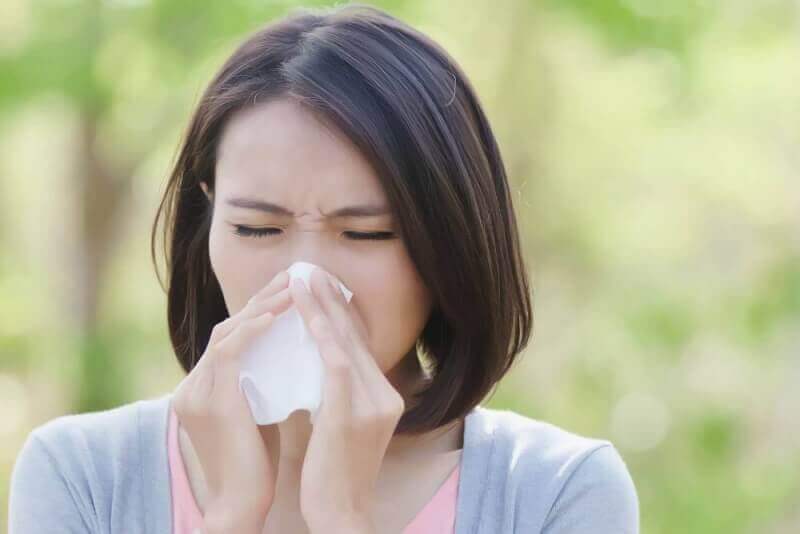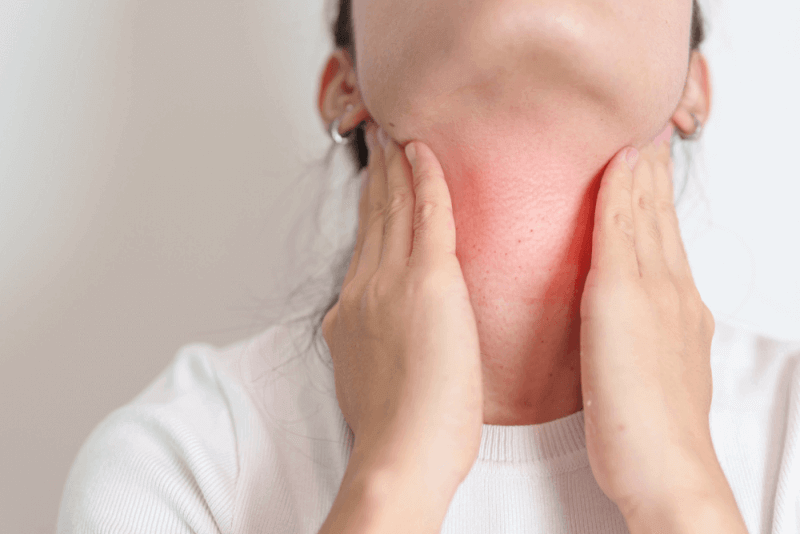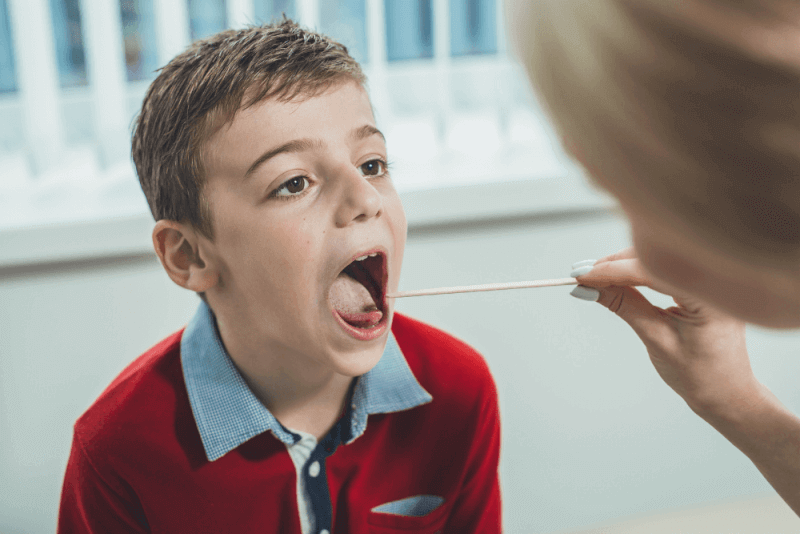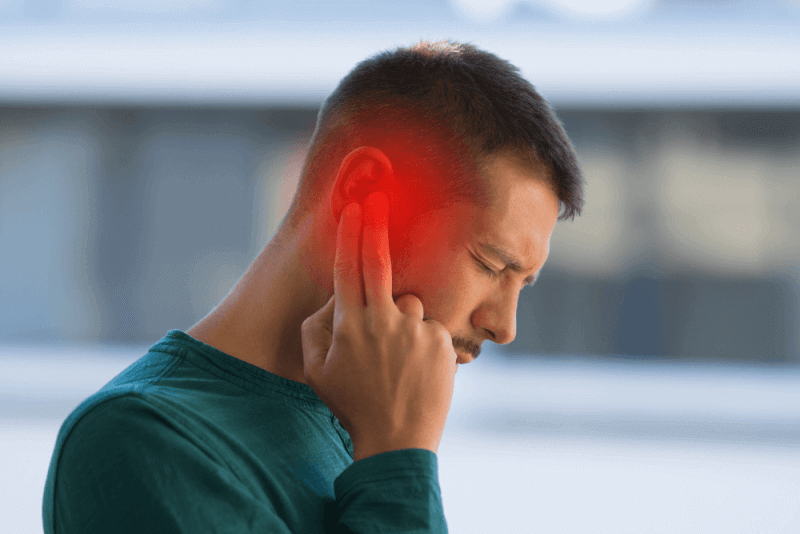30 Second Summary
- Hay fever is caused by genetic tendencies and exposure to allergens; its symptoms depend on the concentration of allergens in the environment.
- There are different types: seasonal, year-round and occupational hay fever, which occurs in the workplace.
- Skin and blood tests are used to diagnose the disease; symptoms include runny nose, watery eyes, cough and headache.
- Treatment includes avoidance of allergens, medications, immunotherapy and environmental changes; complications can negatively affect quality of life.
What is hay fever?
Allergic rhinitis, popularly known as hay fever, is so named because it causes cold-like symptoms. It is usually an allergic reaction of the body's immune system to substances such as mites, pollen and animal dander. It is also called seasonal allergy because it is usually seen in spring and fall. The main reason for its seasonal occurrence is the abundant release of pollen from trees and flowers.
Even if hay fever does not occur at a young age, it can occur in later life and adulthood for unknown reasons. For this reason, it is a type of allergy that can occur at any age and gender. In allergic rhinitis, the allergic reaction takes place in the upper respiratory tract.
Hay fever diagnostic methods
In the diagnosis of hay fever, patients' complaints are first listened to and then the necessary tests are requested. The skin test is one of the most common tests required for hay fever. In this test, the allergen substances that trigger the allergy are applied to the upper part of the skin. Afterwards, it is observed whether there is any allergic reaction. If the patient is allergic to an allergen, blisters appear in the area where this allergen is applied.
Another test used to diagnose hay fever is a blood test. This test measures antibody levels in the blood of patients. Patients may be given allergens before this test.
Causes of hay fever
It is not known exactly why hay fever occurs. However, some characteristics of individuals increase the risk of hay fever. Genetic factors are at the top of these factors.
Hay fever symptoms occur when allergic people are exposed to allergens such as dust, cigarette smoke, pollen and perfume. Because allergens first cause a reaction in people's noses. This reaction causes infection in the nose and increases antibody levels in the body. This causes the symptoms of hay fever to appear.
The severity of hay fever is related to the amount of allergens in the environment. For this reason, it is more common at certain times of the year. For example, grass allergy sufferers show symptoms in the summer, while pollen allergy sufferers show symptoms in early spring.
Types of hay fever
The allergens that cause hay fever vary. However, they are divided into different types according to the mechanism of allergy formation.
Seasonal hay fever
Seasonal allergic rhinitis is caused by pollen. For this reason, it is seen in spring and autumn when the pollen population is high.
Year-round hay fever
It is caused by allergens such as animal dander, house mites and insect droppings. For this reason, the symptoms that cause hay fever can be seen throughout the year.
Occupational hay fever
Allergic rhinitis caused by irritants in the work environment. It is also in these environments that allergic symptoms occur.
Hay fever symptoms
The symptoms of hay fever are similar to those of colds and sinusitis. However, unlike these diseases, hay fever does not cause infection. The symptoms caused by hay fever include the following.
- Runny nose
- Tearing in the eyes
- Nasal discharge
- Sneezing
- Nasal congestion
- Cough
- Itching sensation on the palate
- Bruising in the under-eye area
- Fatigue
- Headache
- Dry and intermittent cough in the supine position
- Sore throat
- Deterioration of sleep quality
- Decreased sense of smell
- Plugging of the ears
Hay fever treatment methods
The main treatment for hay fever is to avoid allergens. However, it is not always possible to avoid some allergens. In this case, allergy treatment methods should be applied. However, these treatment methods do not cure the allergy, but improve the symptoms.
Among the approaches applied in the treatment of hay fever are the following:
- Environmental control to ensure protection from allergens
- Medical treatment methods
- Immunotherapy
Both prescription and over-the-counter medicines are used to treat hay fever. Especially in cases where symptoms are not very severe, over-the-counter medicines are not enough to relieve symptoms. During this process, drug trials can be carried out to determine the best medication to control the symptoms caused by the allergy. These drugs used especially provide the removal of swelling in the nose, allowing patients to breathe more comfortably.
Immunotherapy (allergy shots)
Allergy shots are a preferred method especially for people for whom medication does not relieve symptoms. These vaccines are administered for 3 to 5 years. The small amount of allergens given with the vaccine ensures that the body produces antibodies and that the immune system is not activated by the allergens.
Although immunotherapy does not completely eliminate the allergy, it significantly reduces the amount of medication used by patients. Immunotherapy is effective in pollen, dust mite, cat and dog allergies. In addition, if applied to children, the risk of developing allergic asthma is reduced.
Sublingual allergy tablets
For some patients, sublingual allergy tablets are recommended instead of allergy shots. The effects of the vaccine can be seen by daily consumption of these tablets that dissolve in the mouth.
Flushing of the sinuses
Washing the nasal passages is the fastest and most effective solution to relieve nasal congestion. By washing the ducts, mucus and allergens are cleared from the nose and symptoms are significantly reduced.
Environmental changes
The most effective way to reduce allergy symptoms is to avoid allergens. Some of the changes that can be made for this include the following:
- Hand washing after contact with animals.
- Keeping doors and windows closed to stay away from pollen, especially in spring.
- Taking measures to keep insects out of the house.
- Drying laundry at home.
- Removal of carpets in the bedroom.
- Use of air purifiers in homes and cars.
- Use of vacuum cleaners with high filters.
- Avoid outdoor activities in the morning hours due to the high pollen population.
- Regular washing of bed linen.
- Use of dehumidifiers.
- Use of glasses.
Complications of hay fever
The symptoms caused by hay fever can seriously affect people's quality of life:
- Difficulty falling asleep
- Difficulty maintaining sleep
- Fatigue
- Hearing a whistling sound when coughing or breathing. It is also among the symptoms of asthma.
- Sinusitis
- Ear infections
Limiting allergen exposure
It is not possible to completely avoid allergens that cause hay fever. However, it is possible to minimize allergen exposure by paying attention to some points.
Mold and pollen allergy
If the trigger of hay fever is pollen, the symptoms intensify especially in spring and fall. Mold allergy causes symptoms at any time of the year. Among the points to be considered to avoid both allergens are the following:
- Maintenance of damp areas in the house.
- Since houseplants and flowers contain mold, their number should be minimized.
- Use of dust masks for household cleaning
- Avoid going out on windy and dry days
- Avoid going out in the morning hours when the pollen population is at the highest level
- Use of air conditioning at home and in the car
- Changing the filters of air conditioners regularly
- Drying laundry inside the house to prevent contact with pollen
- Do not open doors and windows during periods of high pollen population
Allergy to dust mites
Dust mites are one of the allergens that can cause symptoms at any time of the year. Therefore, measures to prevent dust mites should be implemented throughout the year. These measures include the following:
- Using an extractor fan while cooking
- Not drying the washed laundry inside the house
- Regular washing of sheets and blankets at 60 degrees
- Preferring bed linen and other textile products used at home from antiallergenic products
Animal hair allergy
People with animal dander allergies should generally stay away from animals. In addition, other points to be considered include the following:
- Pets should not be kept at home.
- If you have a dog at home, they should be bathed twice a week.
- Pets should not be allowed in the bedrooms.
- Hands should be washed after caring for animals.













